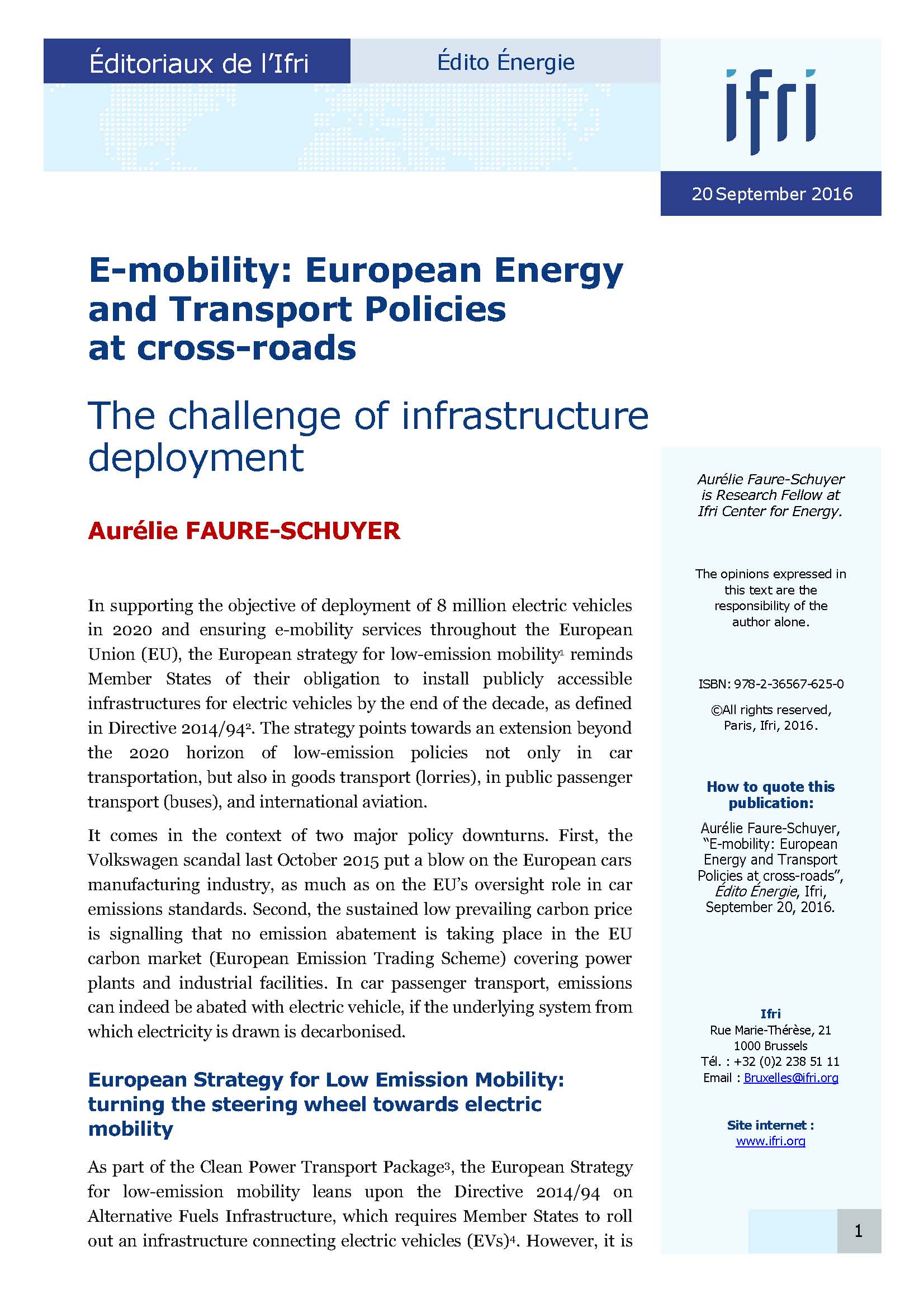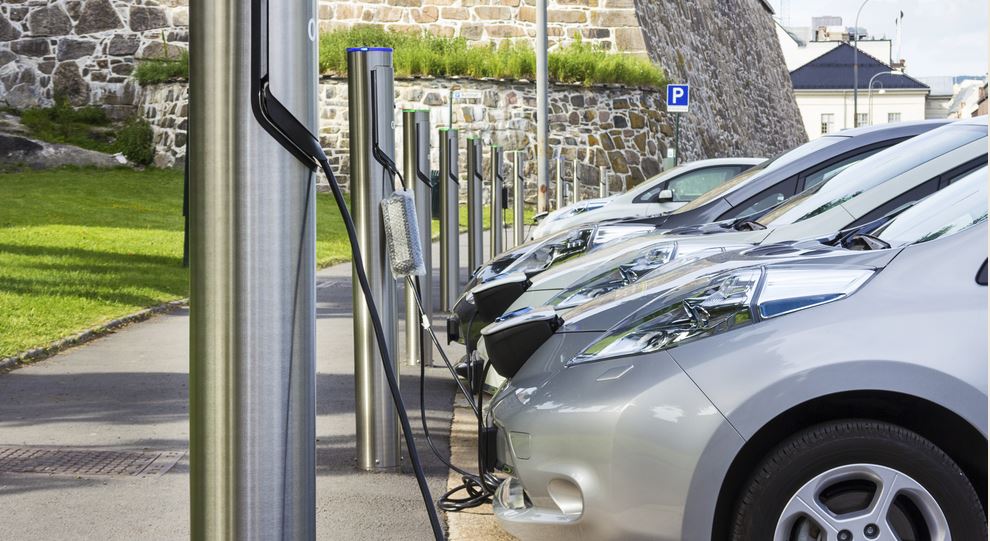E-mobility: European Energy and Transport Policies at Crossroads

European clean transport policy envisages the development of charging infrastructures for electric vehicles within a European e-mobility framework. After the downturns of the Volkswagen scandal and the prevailing low European carbon price, the EU is bringing forward car passenger transport electrification. This requires new business models based on interoperability.

In supporting the objective of deployment of 8 million electric vehicles in 2020 and ensuring e-mobility services throughout the European Union (EU), the European strategy for low-emission mobility reminds Member States of their obligation to install publicly accessible infrastructures for electric vehicles by the end of the decade, as defined in Directive 2014/94. The strategy points towards an extension beyond the 2020 horizon of low-emission policies not only in car transportation, but also in goods transport (lorries), in public passenger transport (buses), and international aviation. It comes in the context of two major policy downturns. First, the Volkswagen scandal last October 2015 put a blow on the European cars manufacturing industry, as much as on the EU’s oversight role in car emissions standards. Second, the sustained low prevailing carbon price is signalling that no emission abatement is taking place in the EU carbon market (European Emission Trading Scheme) covering power plants and industrial facilities. In car passenger transport, emissions can indeed be abated with electric vehicle, if the underlying system from which electricity is drawn is decarbonised.
European Strategy for Low Emission Mobility: turning the steering wheel towards electric mobility
As part of the Clean Power Transport Package, the European Strategy for low-emission mobility leans upon the Directive 2014/94 on Alternative Fuels Infrastructure, which requires Member States to roll out an infrastructure connecting electric vehicles (EVs). However, it is not giving any additional requirements for natural gas vehicle nor hydrogen-based vehicles (fuel cells). Among all forms of low emission vehicles (EVs, Compressed Natural Gas, hydrogen, biofuels), this new strategy orientation is promoting an electric charging infrastructure (charging stations) supporting the uptake of electric vehicles. It comes at a point where the binding objective of 10% of renewables in transport (in place for 2020) may not be pursued towards 2030, thus limiting the adoption of biofuels as a fuel for transportation. As part of the strategy, the Commission is also examining the option of promoting the installation of electric vehicle re-charging points in residential buildings.
To read the full text, download the pdf below.
Download the full analysis
This page contains only a summary of our work. If you would like to have access to all the information from our research on the subject, you can download the full version in PDF format.
E-mobility: European Energy and Transport Policies at Crossroads
Related centers and programs
Discover our other research centers and programsFind out more
Discover all our analysesBrazil One Year Away from the October 2026 General Elections
Brazil’s general elections will be held on October 4, 2026, to elect the president, vice-president, members of the National Congress, governors, deputy governors and state legislative assemblies. For the presidential and gubernatorial elections, a second round will be held on October 25 if no candidate obtains a majority of the votes in the first round.
COP30: An Inflection Point for Climate Action and Governance
The 30th Conference of the Parties (COP30), opening in Belém, Brazil, on November 10th 2025, convenes at a perilous moment.
The Strategic Dimension of Skills in the Clean Industrial Deal
In the competitiveness and energy transition battles, the European Union (EU) must master a determinant factor: skills.
The Energy Transition Faces Geopolitical Challenges. How Can Ideological Divides Be Overcome?
President Trump’s positions and policies, combined with record coal consumption and booming global electricity demand, geo-economic confrontation, and widespread concerns about energy security, are changing the game when it comes to understanding realistic decarbonization trajectories. The war in Europe is intensifying competition between defense and transition budgets. This is also the case elsewhere in the world.












